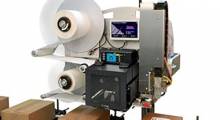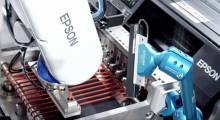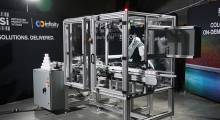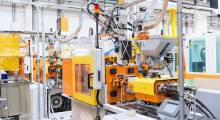Everybody wants to be able to handle complexity in their operations. But not everybody has the capex budget to make that possible.”
So notes Michael Perry, vice president of marketing and business development at Dexterity.
While that’s a point well taken, it doesn’t mean there might not be some wiggle room to innovate along the way.
And that’s exactly what Dexterity has done in a very complex case handling and labeling process.
Perry says GXO Logistics, the world’s largest pure-play contract logistics provider, came to Dexterity and explained what it was up against.
The company received a pallet load of many unsequenced cases that needed to be depalletized, relabeled individually and repalletized before shipment to their final destination.
As a manual process, it was arduous at best. And less than timely if the necessary labor was not available for the manual step of applying the specific label to each box and then repalletize. No need to specify the ripple effect through the supply chain if shipments were delayed. Oh, boy.
The solution “combines advanced robotics with artificial intelligence and machine learning into a practical solution to the problems,” explains Perry. He calls it a plug-and-play operation that seamlessly fits into a specified area on the GXO warehouse floor.
As you already know, third-party logistics providers (3PLs) are not renowned for expansive capex budgets. And this solution fits within budgets easily.
Perry calls the solution “insanely useful for what is actually a common problem” across not just 3PLs but for retailers and consumer packaged goods.
This is definitely an on-the-fly operation. Cases and boxes are handled as unique items in any sequence by the robot and labeler without delay. It’s about accommodating all types of variability.
Yes, artificial intelligence (AI) plays a big role. Perry breaks the process into three segments.
Sense. The robot’s vision system looks at each box and determines in real time how to grab it and where to move it. The robot has no prior training, says Perry. AI is central here.
Think. This is where AI goes into a different problem-solving mode and determines how to stack each box on a particular pallet, optimizing for density and eliminating gaps. Perry calls it “3-D Tetris.”
Move. That information tells the robot how to handle each box. This stage positions each box on a particular pallet load. It also ensures the movement does not collide with any other objects in the area.
The system has on board sensors and computational capabilities to act as its own stand-alone unit with no integration. However, it can also work together with other pieces of technology outside the robot.
In this application, it works with a case labeler that prints and applies a label. The robot confirms application of a label and then palletizes the box.
Perry notes that the robot can be either a traditional static robot arm or an arm on a mobile base.
The robotic labeling solution removes at least two touches from the old process. It also minimizes labor requirements and human error.
When all is said and done, Perry says the AI-enhanced solution reduces the number of touches on a box. It also helps increase label accuracy in a relatively small footprint. Not a bad upgrade at a reasonable capex cost.
About the Author
Follow Robotics 24/7 on Linkedin
Article topics
Email Sign Up
















